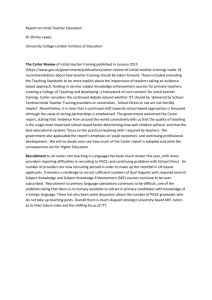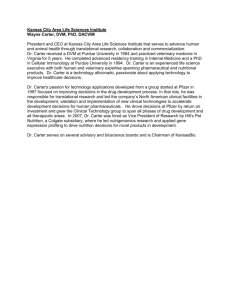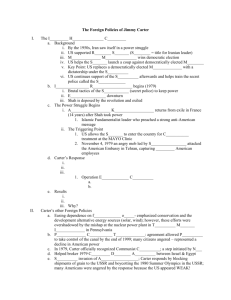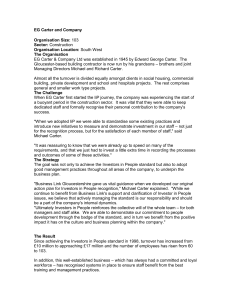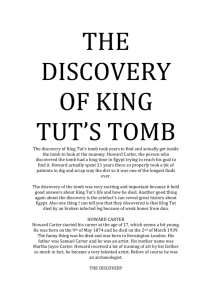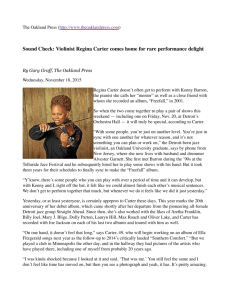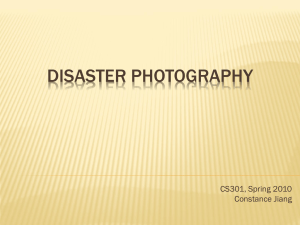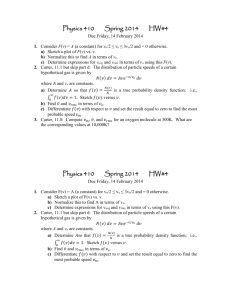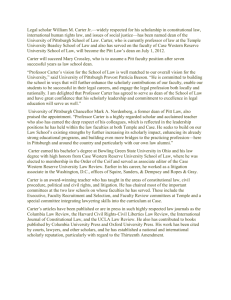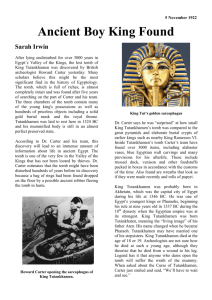Egypt Tutankhamen Primary Source
advertisement
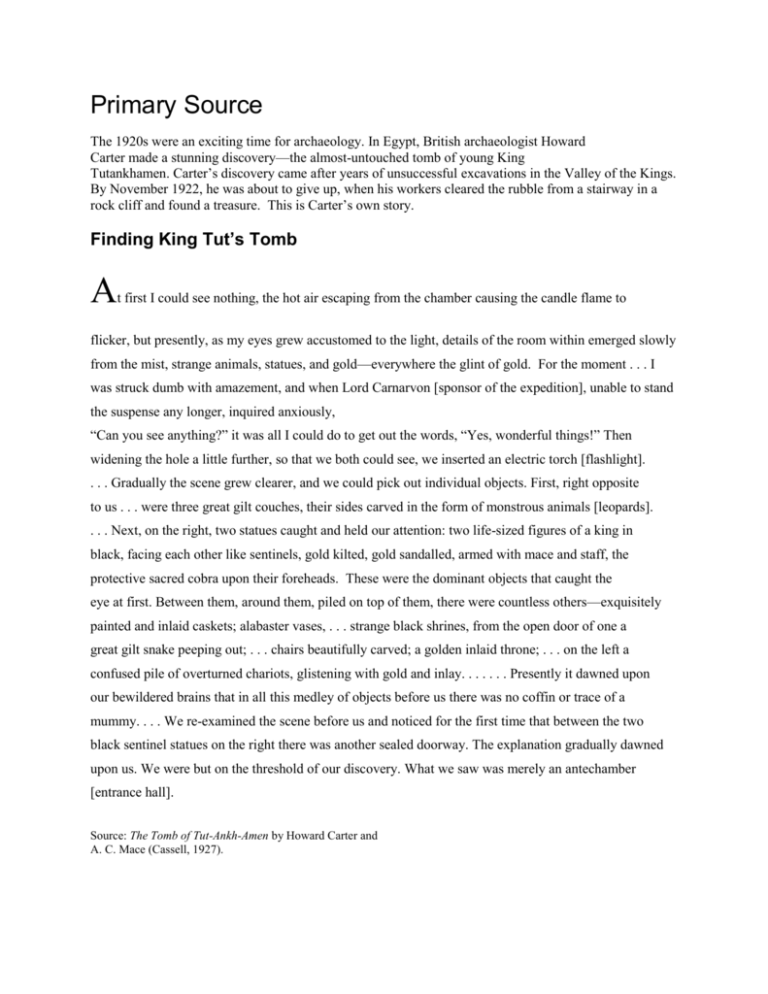
Primary Source The 1920s were an exciting time for archaeology. In Egypt, British archaeologist Howard Carter made a stunning discovery—the almost-untouched tomb of young King Tutankhamen. Carter’s discovery came after years of unsuccessful excavations in the Valley of the Kings. By November 1922, he was about to give up, when his workers cleared the rubble from a stairway in a rock cliff and found a treasure. This is Carter’s own story. Finding King Tut’s Tomb rimary Source Activity A t first I could see nothing, the hot air escaping from the chamber causing the candle flame to flicker, but presently, as my eyes grew accustomed to the light, details of the room within emerged slowly from the mist, strange animals, statues, and gold—everywhere the glint of gold. For the moment . . . I was struck dumb with amazement, and when Lord Carnarvon [sponsor of the expedition], unable to stand the suspense any longer, inquired anxiously, “Can you see anything?” it was all I could do to get out the words, “Yes, wonderful things!” Then widening the hole a little further, so that we both could see, we inserted an electric torch [flashlight]. . . . Gradually the scene grew clearer, and we could pick out individual objects. First, right opposite to us . . . were three great gilt couches, their sides carved in the form of monstrous animals [leopards]. . . . Next, on the right, two statues caught and held our attention: two life-sized figures of a king in black, facing each other like sentinels, gold kilted, gold sandalled, armed with mace and staff, the protective sacred cobra upon their foreheads. These were the dominant objects that caught the eye at first. Between them, around them, piled on top of them, there were countless others—exquisitely painted and inlaid caskets; alabaster vases, . . . strange black shrines, from the open door of one a great gilt snake peeping out; . . . chairs beautifully carved; a golden inlaid throne; . . . on the left a confused pile of overturned chariots, glistening with gold and inlay. . . . . . . Presently it dawned upon our bewildered brains that in all this medley of objects before us there was no coffin or trace of a mummy. . . . We re-examined the scene before us and noticed for the first time that between the two black sentinel statues on the right there was another sealed doorway. The explanation gradually dawned upon us. We were but on the threshold of our discovery. What we saw was merely an antechamber [entrance hall]. Source: The Tomb of Tut-Ankh-Amen by Howard Carter and A. C. Mace (Cassell, 1927). Questions to Think About C H A P T E R 2
